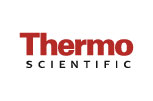Element XR
High Resolution ICP-MS
The Thermo Scientific™ Element XR™ ICP-MS combines a dual mode Secondary Electron Multiplier with a Faraday detector, enabling the linear dynamic range to be increased by an additional three orders of magnitude relative to the Element 2 ICP-MS. As the Element 2, the Element XR offers multi-elemental analysis by interference-free measurements across the periodic table covering a mg/L to sub pg/L concentration range, from ultra-trace to matrix components. The multi-elemental detector has the speed to handle transient signals, including CE, HPLC, GC, FFF and laser ablation. The Element XR is compatible with inorganic and organic solids and nearly all solution matrices.
Next to elemental analysis, the Element XR offers high precise isotope ratio analysis as well on both non-interfered and interfered isotopes. For example, the Element XR is the ideal workhorse for U-Pb age dating using laser ablation. Also both hot and cold plasma conditions are possible. The high mass resolution of the Element XR produces unambiguous elemental spectra, enabling the interference-free analysis of almost all elements of the Periodic Table. The software offers full access to all instrumental parameters for method development.
The Element XR offer full automation for routine analysis, with autotuning of all parameters, including lenses, gas flows and the torch position for reproducible and reliable system setup. It comes with a comprehensive and customizable quality control system. The robustness and reliability of the Element XR enables this ICP-MS to serve as a 24/7 production control tool with maximized sample throughput.

Features
The linear dynamic detection range is of immense importance in ICP-MS because a wide range of elements and concentrations is analyzed in a single analysis.
Integrated Faraday Detector Features
- Sample times of down to 1ms
- No decay time required after the measurement of high intensities
- Automatic switching between SEM (Analog and Counting detection modes) and Faraday with delay times < 1ms
- Wide cross-over ranges (> 2 orders of magnitude) between different detector modes allows accurate, automated cross-calibration
- Automatic cross-calibration between Faraday and Analog signals
- Dynamic range: 5 x 10(superscript 7) cps to > 1 x 10(superscript 12) cps (1ms sample time)
- Maximum measurable concentration achievable is over 1000










